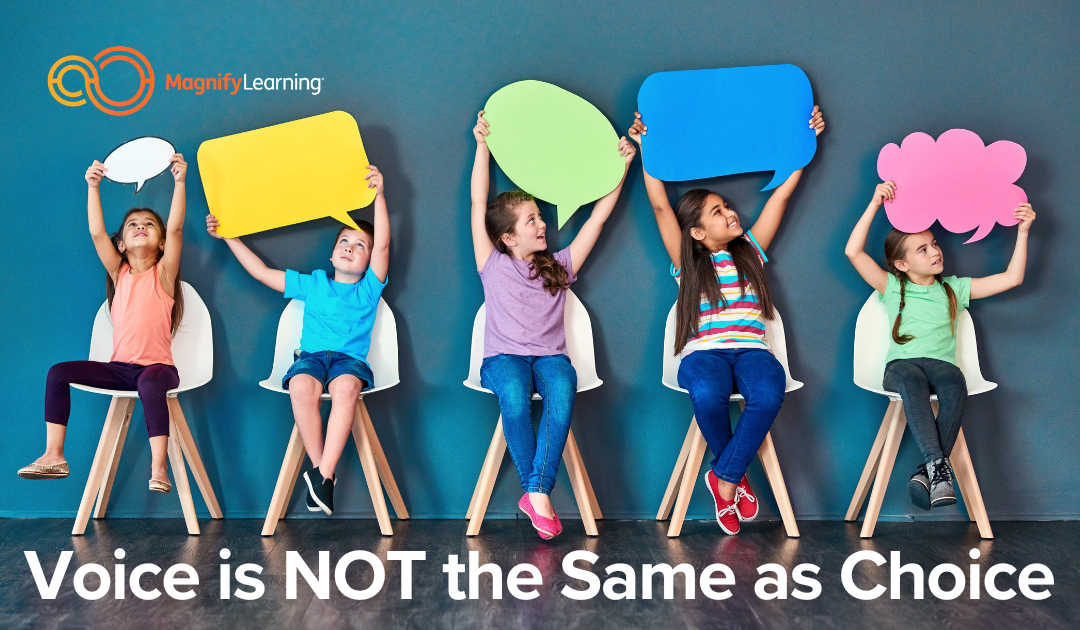SHOW NOTES
PBL and Voice/Choice
Voice is not the same as choice. They just rhyme.
- Voice and choice are often used interchangeably, but they are distinct concepts.
- This episode explores the differences between voice and choice in Project Based Learning (PBL).
Understanding Choice
- Choice is about autonomy and agency.
- Choice boards are an example of how to provide choice in the classroom.
- Giving students the option to choose their seats is another way to offer choice.
- When teachers provide choices, they are requiring students to make decisions about their learning.
- This can help students to become more engaged and invested in their learning.
Understanding Voice
- Voice is about impact.
- Students need opportunities to share their opinions and ideas, and to know that their voices are valued.
- Traditional school systems often discourage students from using their voices.
- Giving students a voice can help them to move from passive to active learners.
- For example, asking students for their “likes and wonders” at the end of a PBL unit gives them a voice.
- Even if a teacher does not implement a student’s idea, simply asking for the student’s input and considering it can be powerful.
The Continuum of Voice and Choice
- Voice and choice exist on a continuum.
- Some teachers may be more comfortable giving students a lot of voice and choice, while others may prefer to start with smaller steps.
- It is important to find a balance that works for both the teacher and the students.
- Too much voice and choice can lead to chaos, but too little can stifle student creativity and engagement.
- The appropriate amount of voice and choice may vary based on grade level and the students’ prior experiences with PBL.
Key Takeaways
- Teachers should be intentional about providing both voice and choice in their classrooms.
- Choice helps students to develop autonomy and agency, while voice gives them a sense of impact and empowerment.
- Teachers should start with small steps and gradually increase the amount of voice and choice they offer as their students become more comfortable with PBL.
- It is important to find a balance that works for both the teacher and the students.
Call to Action
- Check out the PBL Master Class for Teachers for a comprehensive overview of PBL.
- Rate and review the podcast to help other teachers find it.
- Magnify Learning – www.magnifypbl.com
RESOURCES & LINKS RELATED TO THIS EPISODE
JOIN THE PBL MOVEMENT ONLINE COMMUNITY
SIGN UP FOR THE MAGNIFY LEARNING NEWSLETTER
SUBSCRIBE TO THE PBL SIMPLIFIED FOR TEACHERS PODCAST
SCHEDULE A PBL TRAINING WITH MAGNIFY LEARNING
CHECK OUT RESOURCES MENTIONED ON THE PODCAST
ASK RYAN A QUESTION FOR THE PODCAST
FOLLOW US ON SOCIAL MEDIA
Some of the links above are affiliate links which means we get a small commission on anything you purchase using that link (at no more cost to you). As Amazon Associates, we earn from qualifying purchases.

